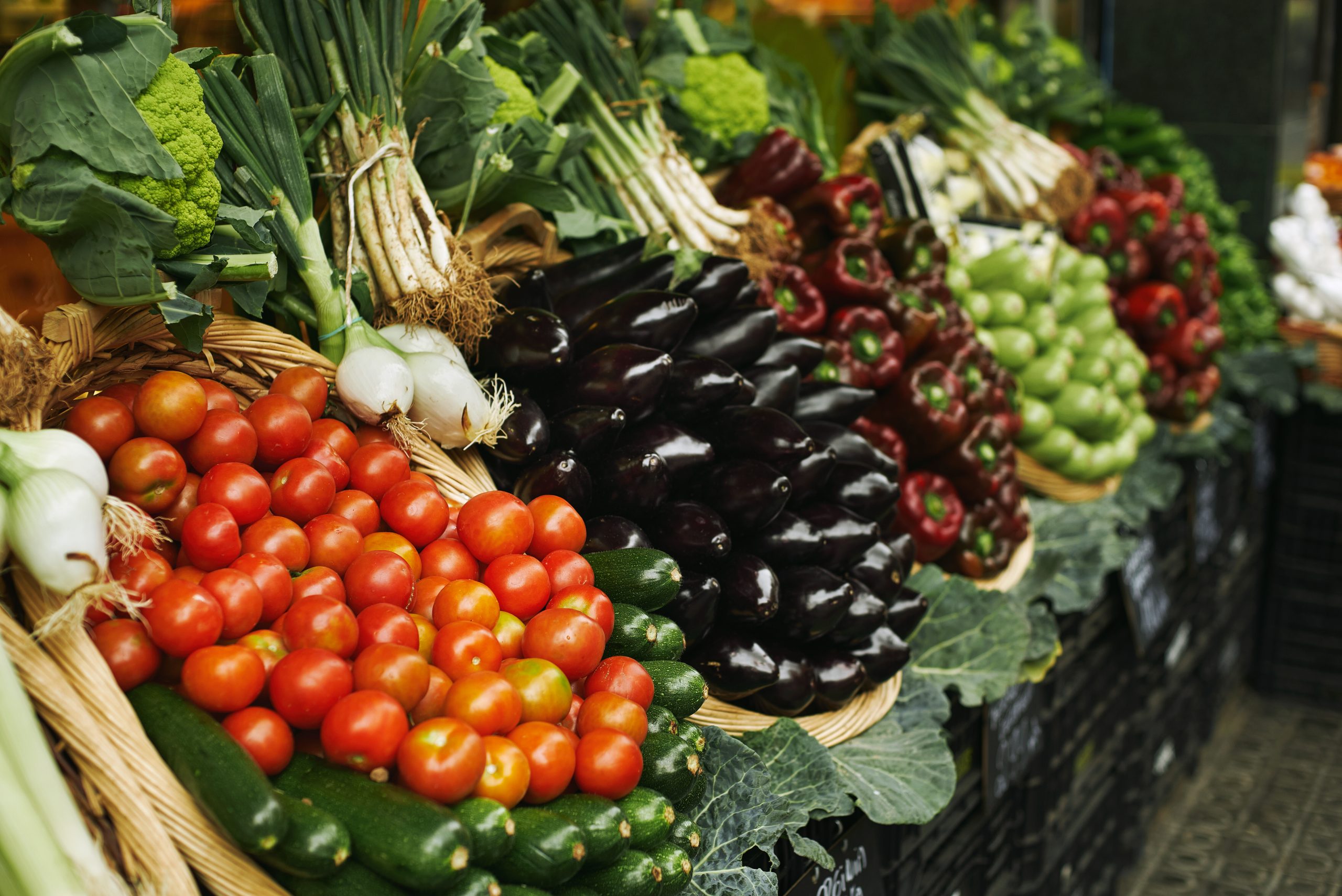An ever-demanding market and the necessity to produce quality food compel farmers to have effective technical means, which are able to respond to an increasing consumption without compromising consumers' health and the environment.
The importance of horticultural and fruit production in Italy
According to data collected by Eurostat, Europe (28 countries) produced about 12% of fruit and vegetable global production in 2018 (47,9 million tons of fruit and 57,8 million tons of vegetables). Spain and Italy are the leading producers in the European horticultural sector (9,8 e 6,9 million tons respectively); the two markets represent about 34% of the total production in Europe (46,8 million tons).
Also, in 2018, in EU, tomato was the most produced horticultural product (16,7 million tons) followed by onion (6,3 million tons) and carrot (5,3 million tons). As regards fruit, Spain (14,2 tons) is in the lead, closely followed by Italy (10,5 tons) and Poland (5,84 tons) [1].
Italy, along with Spain, is the main producer and exporter of fruit and vegetables in Europe. Thanks to its climatic diversity, it offers a wide range of products; it is highly regarded for the conventional agriculture of apples and pears in areas with moderate temperatures, and it is well-known as a major producer of stone fruits and high-quality horticultural products such as tomatoes and eggplants.
[1] Source European Statistics Handbook – FRUIT LOGISTICA 2019 accessed on 10/03/2021

Over the last few years (2014-2018) our Country has produced up to 10 million tons of fruit and 7 million tons of vegetables. A third of fruit and 12% of vegetables are exported every year (Germany, France and Austria are the main destinations). 15% of horticultural production is intended for international export. Italy, in fact, is the ninth exporter of fresh vegetables, with 1,5 billion of euro reached in 2018 by exporting tomatoes, salad (in particular, ready-to-eat salad) and brassicaceae as main crops.
(Source: Ismea data processing of UN-Comptrade ITC)


Whereas, if we take into account the export of processed vegetables, Italy occupies the 4° position with 2,2 billion of euro in 2018 and 2,4% annual growth between 2014 and 2018. In this case, the most representative products are pulps and peeled products (42%) purées and pastes (29%). Germany, United Kingdom, France, Usa and Japan are the countries where the export is focused.
(Source UN-Comptrade ITC)
Cerea FCP for a quality horticultural production
The range of products chosen to be applied to the horticultural production includes four macro-categories: mineral e organo-mineral microgranulars, organo-mineral granulars, powdered and liquid microelements and biostimulants.
- Power: the Power line is characterised by microgranular formulations (0,7-1,7 mm or 1-2 mm) of mineral and organo-mineral fertilizers. The family offers a wide range of products, whic can be used both in organic and conventional farming. Their granulometry allows an application during transplant directly in contact with the seedlings or, in the case of potatoes, in contact with the seed or with the seed tuber (starter technique) without causing phytotoxicities. Moreover, it allows a reduction in dosages and respects the environment.
- Fert and Fert Premium: range of organo-mineral granular products with high-quality organic matrices and high nutritional value. They contain humic acids which act on the soil by increasing the mobilization and absorption of nutrients. The organic matter present in the products enriches the soil and enhances its structure. Also, in the Fert Premium line, the potassium contained in the formulation comes from sulphate, ideal for those crops sensitive to the presence of chlorine.
- Reactive: this family is composed by liquid and powdered products suitable both for fertigation and foliar treatment. They are characterized by the presence of meso and microelements, they help to prevent damages due to nutrient deficiencies and to provide plants with a balanced nutrition. In addition, some of these products, besides being allowed in organic farming, contain carboxylic or humic/fulvic acids which help to carry nutrients to the plant, increasing their absorption.
- Futura: line of liquid products containing organic active substances with a stimulating action. They activate the physiological processes and the natural defence mechanisms of the plant, they favour root growth, thus increasing the absorption of nutrients and help the plant to tackle situations of abiotic stress. The biostimulants of the Futura family contain aminoacids, algae extracts and humic/fulvic acids.
Field trials on the potato "Novella di Siracusa"
In the province of Siracusa, the potato "Novella di Siracusa", a Sicilian potato belonging to P.A.T. (Prodotti Alimentari Tradizionali, i.e., "Traditional Food Products"), is produced. It is characterised by a yellow pulp, a yellow smooth and thin skin with an elongated oval shape of medium-large size. The average yield of this potato is about 330 q/ha, and the production cycle lasts from November (sowing) to March (harvest).
In the course of the 2019/2020 agricultural campaign, a field trial has been carried out in order to assess two products:
- Super Power Extra, a micro-granular product of the Power family;
- StimUp, a biostimulant of the Futura line.
Product description
Super Power Extra, a mineral NP microgranular compound fertilizer (granulometry between 0,7-1,7 mm), is characterized by a high content of soluble phosphorus and a 1:3 nitrogen (ammoniacal)-phosphorus ratio. The product should be applied during the sowing phase, in direct contact with the seed.
Moreover, Super Power Extra contains Calcium, Boron, Iron and Zinc, wich are fundamental in the first development stages of the plant.
StimUp is a bioactivator of the rhizosphere with humic and fulvic acids and a low-molecular-weight. It stimulates the natural production of hormone-like substances, increasing the cell division of apical meristems, promoting root development and the tuber formation.
Materials and methods
- Company located in the area of Porto Commerciale Augusta
- Area: 1 ha
- Period of sowing: November 2019
- Electric conductivity and irrigation water pH: 1800 µS/cm, pH 7.3
- Average water hardness: 120-150 ºF
- Na average value > 300 mg/l, bicarbonates average value> 200 mg/l
Treatments
Cerea FCP field trial:
- Basal application with organo-mineral product with a high content of phosphorus
- Localized fertilization in furrow with 40 kg/ha of Super Power Extra
- StimUp at sowing, dosage of 100 ml/hl
- StimUp foliar treatment with 100 ml/ha during tuber formation
Control:
- Basal application with organo-mineral product with a high content of phosphorus
- Fertigation with biostimulants (algae, humic acids) through sprinkler
On February 21st, 2020 the first data were collected, showing the following results:



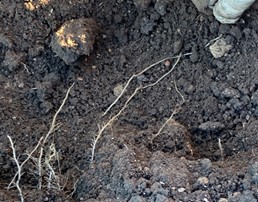
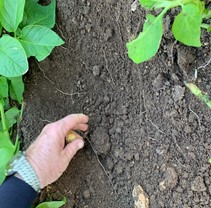
In Cerea FCP field trial, an optimal root development, with an increased growth of root hairs and a greater quantity of tubers (10 + 4) were observed, even though calibre and size were not completely homogeneous. Whereas, despite phenomena of morning frost, the foliar system had a balanced development, with a more globular and compact plant's habit, a thick leaf blade of a bright green colour and a greater stem section.
In the Control trial, the root system developed well, even if the presence of root hairs was inferior. The quantity of tubers was lower too (9 + 1), but they were uniform and homogeneous in size. The foliar system had an optimal development, although the percentage of damaged leaves due to frost was slightly higher than in Cerea FCP field trial. The stem section was less developed too and the plant's habit was more open and less compact, with leaf blades of regular thickness and colouring.
In April 9th, 2020 harvesting was carried out. During this phase, other tests were performed (10 m2 plot), as reported in Table 3.

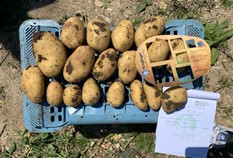
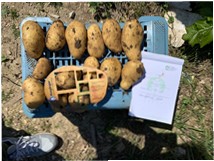
Conclusions
The data collected and the observations made show that the plants of Cerea FCP field trial, fertilized with Super Power Extra and StimUp at sowing, had a major development of the root system resulting in a big and compact plant. The tubers at harvest showed a greater weight and a uniformity in caliber. Even if the gap was slightly wider as compared to Control, the marketable yield per hectare has proven to be greater thanks to the action of StimUp during tuber formation. The product enhanced their elongation, thus allowing to further reduce waste. Furthermore, the plant has suffered less stresses from frost, showing a minor damage and a faster recovery than Control.
The field trial points out how a correct fertilization at sowing (starter technique in furrow) and the use of a biostimulant on root development promotes a homogeneous growth, a greater resistance of the plant, an increase in tuber formation and an enhanced qualitative and quantitative yield per hectare.

